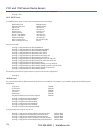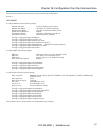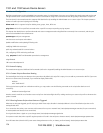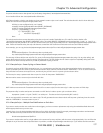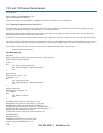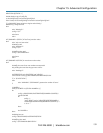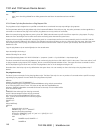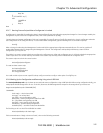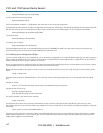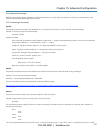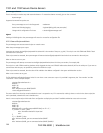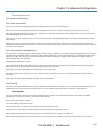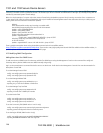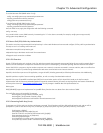
Chapter 15: Advanced Configuration
724-746-5500 | blackbox.com
141
sleep 30s
fi
if [ "$COUNTER" -eq 5 ]
then
COUNTER=0
"$@"
sleep 2s
fi
done
!
A configurator is responsible for reading the values in /etc/config/config.xml and making the appropriate changes live. Some changes made by the
configurators are part of the Linux configuration itself, such as user passwords or ipconfig.
Currently there are nineteen configurators. Each one is responsible for a specific group of config (for example, the "users" configurator makes the
user configurations in the config.xml file live). To see all the available configurators, type the following from a command line prompt:
# config
When a change is made using the Management Console web GUI, the appropriate configurator automatically runs. This can be a problem if
another Administrator makes a change using the Management Console. The configurator could possibly overwrite any custom CLI/linux
configurations you may have set.
The solution is to create a custom script that runs after each configurator runs. After each configurator runs, it will check whether that appropriate
custom script exists. You can then add any commands to the custom script and they will be invoked after the configurator runs.
The custom scripts must be in the correct location:
/etc/config/scripts/config-post-
To create an alerts custom script:
# cd /etc/config/scripts
# touch config-post-alerts
# vi config-post-alerts
You could use this script to recover a specific backup config or overwrite a config or make copies of config files, etc.
"
The /etc/scripts/backup-usb script is written to save and load custom configuration using a USB flash disk. Before saving configuration locally, you
must prepare the USB storage device for use. To do this, disconnect all USB storage devices except for the storage device you want to use.
Usage: /etc/scripts/backup-usb COMMAND [FILE]
COMMAND:
check-magic -- check volume label
set-magic -- set volume label
save [FILE] -- save configuration to USB
delete [FILE] -- delete a configuration tarbal from USB
list -- list available config backups on USB
load [FILE] -- load a specific config from USB
load-default -- load the default configuration
set-default [FILE] -- set which file becomes the default
The first thing to do is to check if the USB disk has a label:
# /etc/scripts/backup-usb check-magic
If this command returns "Magic volume not found", then run the following command:
# /etc/scripts/backup-usb set-magic




